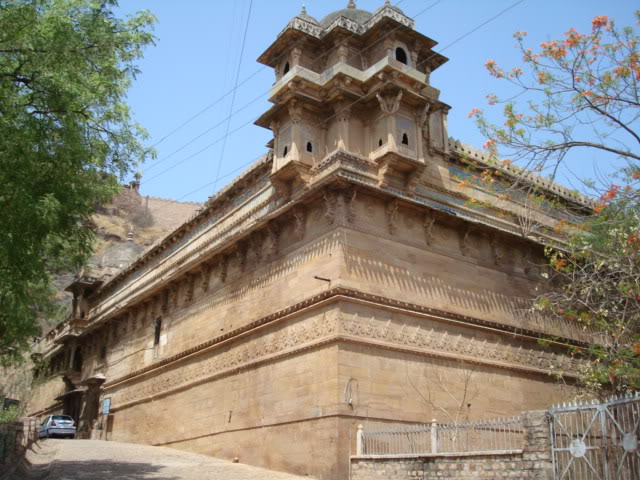Gujari Mahal Archaeological Museum on:
[Wikipedia]
[Google]
[Amazon]

 The Gujari Mahal Archeological Museum or State Archaeological Museum, sometimes called the "
The Gujari Mahal Archeological Museum or State Archaeological Museum, sometimes called the "
p.89
/ref> The palace of Gujari Mahal was built by Tomar Rajput ruler

 The Gujari Mahal Archeological Museum or State Archaeological Museum, sometimes called the "
The Gujari Mahal Archeological Museum or State Archaeological Museum, sometimes called the "Gwalior Fort
The Gwalior Fort commonly known as the ''Gwāliiyar Qila'', is a hill fort near Gwalior, Madhya Pradesh, India. The fort has existed at least since the 10th century, and the inscriptions and monuments found within what is now the fort campus in ...
Museum", is a state museum in Gwalior
Gwalior() is a major city in the central Indian state of Madhya Pradesh; it lies in northern part of Madhya Pradesh and is one of the Counter-magnet cities. Located south of Delhi, the capital city of India, from Agra and from Bhopal, the s ...
, located in the fortress of Gujari Mahal. It displays numerous artifacts of the region, including a fragment of the Garuda capital of the Heliodorus pillar
The Heliodorus pillar is a stone column that was erected around 113 BCE in central India in Besnagar (near Vidisha, Madhya Pradesh). The pillar was called the ''Garuda-standard'' by Heliodorus, referring to the deity Garuda. The pillar is commonly ...
from Vidisha
Vidisha (विदिशा, formerly known as Bhelsa and known as Besnagar in ancient times) is a city in central Madhya Pradesh, India. It is located 62.5 km northeast of the state capital, Bhopal. The name "Vidisha" is derived from th ...
.Buddhist Landscapes in Central India: Sanchi Hill and Archaeologies of Religious and Social Change, C. Third Century BC to Fifth Century AD, Julia Shaw, Left Coast Press, 2013p.89
/ref> The palace of Gujari Mahal was built by Tomar Rajput ruler
Man Singh Tomar
Man Singh Tomar (IAST: Mānasiṃha) was a Tomar Rajput ruler of Gwalior who ascended the throne in 1486 CE.
History
Maharaja Man Singh Tomar was born to Raja Kalyanmall, the Tomar Rajput ruler of Gwalior. He ruled for over 30 years. In hi ...
for his wife Mrignayani who belonged to Gujjar
Gurjar or Gujjar (also transliterated as ''Gujar, Gurjara and Gujjer'') is an ethnic nomadic, agricultural and pastoral community, spread mainly in India, Pakistan and Afghanistan, divided internally into various clan groups. They were tradit ...
tribe. She demanded a separate palace for herself with a regular water supply through an aqueduct from the nearby Rai River. The palace has been converted into an archaeological museum. Rare artifacts at the museum include Hindu and Jain sculptures dated to the 1st and 2nd centuries BCE, miniature statue of Salabhanjika
A salabhanjika or shalabhanjika is a term found in Indian art and literature with a variety of meanings. In Buddhist art, it means an image of a woman or yakshi next to, often holding, a tree, or a reference to Maya near the ''sala'' tree giving ...
, terracotta
Terracotta, terra cotta, or terra-cotta (; ; ), in its material sense as an earthenware substrate, is a clay-based ceramic glaze, unglazed or glazed ceramic where the pottery firing, fired body is porous.
In applied art, craft, construction, a ...
items and replicas of frescoes
Fresco (plural ''frescos'' or ''frescoes'') is a technique of mural painting executed upon freshly laid ("wet") lime plaster. Water is used as the vehicle for the dry-powder pigment to merge with the plaster, and with the setting of the plaste ...
seen in the Bagh Caves
The Bagh Caves are a group of nine rock-cut monuments, situated among the southern slopes of the Vindhyas in Bagh town of Dhar district in Madhya Pradesh state in central India. These monuments are located at a distance of 97 km from Dhar ...
.
References
Museums in Madhya Pradesh Buildings and structures in Gwalior Education in Gwalior Archaeological museums in India Tourist attractions in Gwalior Rajput architecture {{MadhyaPradesh-geo-stub